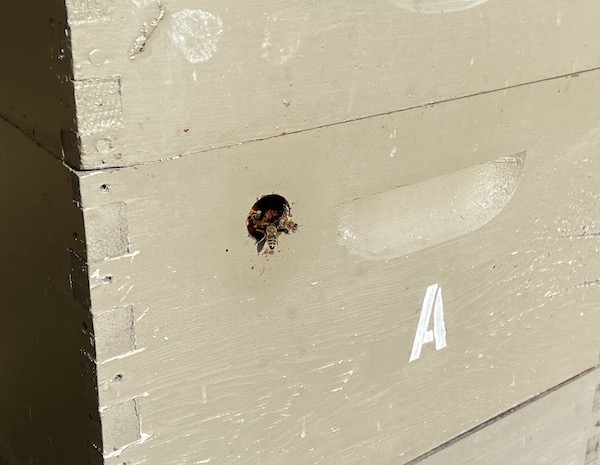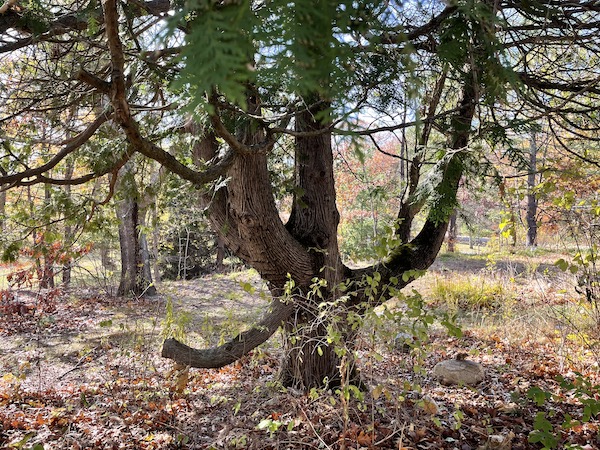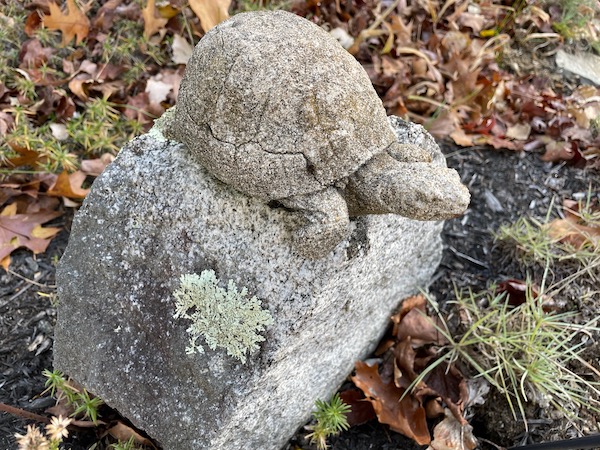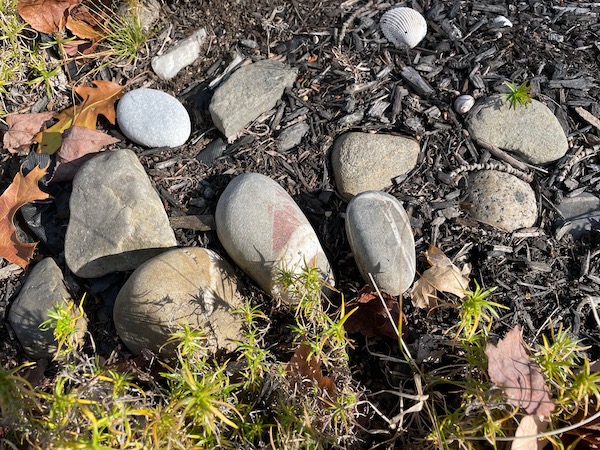Feeling anxious about this or that is part of being human. But these days, a lot of us are feeling more anxious than usual. Only we may not recognize what we are feeling as anxiety, and we might ignore some important signs.
I recently attended a series of wellness workshops on the topic of anxiety hosted by Thomas Memorial Library in Cape Elizabeth, Maine (Do yourself a favor and browse their website. They are offering some phenomenal online programs.)
The wellness workshop presenter was counselor Rachel Weinstein, L.C.P.C. She has a private practice at Open Heart Space in Portland, Maine, and currently offers counseling and psychotherapy online.
I learned a lot in her presentations and decided to follow up and ask her some questions about anxiety for Catching Health.

Is feeling anxious the same as having anxiety?
Feeling anxious is not the same thing as having an anxiety disorder, which would be more of a pattern, and generally chronic. The reality is, a lot of people right now could be diagnosed with an anxiety disorder if they found it problematic enough. All you need for a generalized anxiety diagnosis is a chronic pattern of increased worry, muscle tension, difficulty sleeping, things like that, which are pretty common right now. If people are having a day when they feel anxious, that’s not an anxiety disorder, but if they have a string of days and they’re getting to the point where it’s really affecting their quality of life and ability to function, that’s when it becomes helpful to understand the difference.
Rachel Weinstein L.C.P.C
So many people’s lives have been disrupted and they’re overwhelmed with new/different responsibilities. Working parents, for instance, whose children are home but they still have work obligations to fulfill. Their days have become so busy, how do they even have time to deal with their own anxieties?
I think that’s why sometimes it requires circling the wagons and cutting stuff out. We have to make really mindful choices about how we spend our time. We need to take care of ourselves but that’s the hard thing for a lot of people. They feel like they really need to go to therapy, but when would they ever go? It’s hard. I think we have to find the time for things and make them a priority. I’m likely to suggest doing something simple, taking a hot bath, or meditating for five minutes, or when you notice that you’re feeling anxious taking a deep breath and putting your hand on your heart and saying, “I’m okay. I’m going to be okay.” Little things that don’t take a lot of time can be easy places to start when people are feeling overwhelmed.
Rachel Weinstein L.C.P.C
People are at different stages of their lives and living in different situations, but would you say the anxiety they experience is the same, no matter what?
At the bottom level, anxiety is pretty similar from person to person. But what people fixate on is certainly different. The stressors in people’s lives at various stages of life are definitely different, but there are themes. One of the themes is around safety, and so worrying about COVID can create a lot of anxiety, There can be financial anxiety, anxiety about my parents’ or my kids’ futures. And then sometimes it can be more of a relational anxiety. Being together, having patterns disrupted, and all the increased stress is putting a lot of pressure on relationships, which can cause anxiety. Is my relationship, my marriage going to last? And then, different people have different levels of concern around COVID. It can be pretty challenging for a lot of couples when one person wants their kids to go back to school and the other adamantly doesn’t and feels scared.
Rachel Weinstein L.C.P.C
Children, too, must be feeling some anxiety. The younger ones may not even have the words to describe how they’re feeling but are exhibiting behaviors that clearly show they’re affected by what’s going on. How can parents handle those situations?
I think that’s where we have to be really conscious of the messages we’re sending. Even if we can’t explain the situation, how energetic are we when we’re talking to our spouse about it? Are they getting the sense that something is wrong or that they’re safe and that we’re doing what we need to do to keep ourselves safe?
Rachel Weinstein L.C.P.C
Do you expect there’ll be long term issues for some people?
I think there will be but I don’t think there has to be. I wouldn’t be surprised, for instance, if we raise a generation with some obsessive symptoms — excessively hand washing and having this fear of germs and that kind of thing, but it will just seem normal. When your brain is hardwiring during a really stressful time in the world, that’s going to happen. Luckily, brains show so much plasticity that we have the potential to heal from that. And that’s why I think it’s important for us to be able to talk about how this is hard and scary and how to stay safe and to have enough resources for mental health so that people may be affected long-term, but they can also recover.
Rachel Weinstein L.C.P.C
So, then it’s really important for each of us as individuals to figure out what we can do to nurture ourselves, to pay attention to the signals that our bodies give us, and then to know ourselves well enough to realize that I’m feeling this way, here’s what I should do right now?
Yes, and to pay attention to when we need extra help. I think there’s still, unfortunately, so much of a stigma against therapy. And I think even just a few sessions sometimes can help. What am I doing right now in my life? How are my thoughts helping me or not helping me? Getting some direction on that and learning some tools can be helpful. Not paying attention to how we’re feeling, not taking time to unplug is just too much for our nervous systems.
Rachel Weinstein L.C.P.C
Remind us of some of the warning signs that we shouldn’t ignore.
Sleeplessness, short temper, irritability, pervasive worry, obsessiveness, intense feelings of needing to protect oneself that seems out of proportion to the reality of danger, jitteriness, shakiness. feeling like you can’t get a deep breath, a racing heart …
Rachel Weinstein L.C.P.C
What do you do when you’re feeling anxious?
Well, I think the first thing I always do is say, what’s going on in my mind? Why am I feeling anxious? What am I feeling worried about? I try to look at the accuracy of my thoughts and see if there’s something I can do proactively to change the situation I’m concerned about. If there’s not, then I go to Plan B, which is how can I help myself let go of a situation that I’m trying to have control over that I cannot control.
I might just try to be in a peaceful environment like the outdoors, try to distract myself by doing something that cheers me up. I think sometimes, part of the problem with being overwhelmed about a situation you can’t control is that you get very fixated on it. And when you can’t do anything about something, fixating on it is not necessarily the most helpful or healthy thing to do.
Letting myself really feel the sadness or the fear and then shifting gears to talking to a friend who cheers me up or reading something happy or watching a funny show, or taking a walk or playing with my kids are things that bring me back into my body. They help me remember that the thing I’m upset about may be true, but there are beautiful, happy positive things that are also true at the same time.
Rachel Weinstein L.C.P.C
In the spirit of Rachel’s advice, what are some things that you do to help yourself when you’re feeling anxious?
I find that meditating helps a great deal. My biggest hurdle is giving myself the time every day to do it, but when I do, it’s such a gift. Anne Gosling, who is a wonderful teacher, gives us some lessons in this blog post: Cultivating mindfulness in turbulent times. Stepping outside also helps to calm me down. This morning, on a FaceTime chat with my granddaughters (4 and 2), we checked on the beehive in my backyard, discovered the “chair” in a cedar tree, saw how cedars don’t lose their “leaves” in the fall, marveled at a magnificent old maple tree that does lose its leaves, said good morning to the turtle in the rock garden and examined some interesting rocks and shells, and found a secret path between some lilac bushes. I just went out and took some pictures. Maybe they’ll help relieve some of your anxiety.







Remember to share your tips and pictures with us, too. And thank you, Rachel, for your words of wisdom.

Leave A Comment